Owning a dog comes with the joy of having a loyal companion and the responsibility of ensuring their well-being. As our furry friends age or encounter health issues, their mobility can be significantly affected. This is where dog wheelchairs come into play, offering a mobility solution that can greatly enhance the quality of life for our canine companions.
But how do you know if your dog needs a wheelchair? This comprehensive guide will walk you through the signs, considerations, and steps to take if you think your dog might benefit from a mobility aid.
Key Takeaways:
- Recognize the signs of mobility issues in dogs, such as difficulty walking or reluctance to move.
- Understand the importance of consulting with a vet to diagnose the underlying cause of mobility challenges.
- Learn about the different types of dog wheelchairs and how they can assist dogs with varying mobility needs.
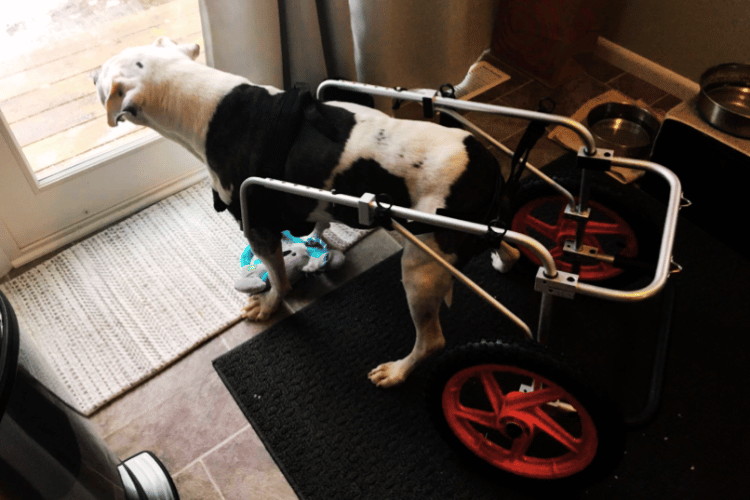
Recognizing Mobility Issues in Dogs
Mobility issues in dogs can manifest in various ways. Pet parents might notice their dog's reluctance to move, difficulty standing up, or a decrease in activity levels. These signs can be particularly evident in larger dogs, which are often more prone to conditions like hip dysplasia. If your dog's rear legs seem weaker than usual or if they are dragging their back legs, these could be indicators that your dog is experiencing physical pain or muscle atrophy that is affecting their ability to walk.
The Towel Test: A Simple Assessment
The towel test is a straightforward method to assess your dog's mobility. By placing an old towel under your dog's abdomen and gently lifting, you can provide rear support and observe how much weight they can bear on their hind legs. If your dog struggles to maintain balance or seems uncomfortable even with this assistance, it may be time to consider a mobility aid like a wheelchair.
When to Consult Your Vet ASAP
Before making any decisions about mobility devices, it's crucial to consult with your vet. Early stages of mobility issues, such as those caused by intervertebral disc disease or degenerative myelopathy, require professional diagnosis and proper care. Your vet can determine the cause of your dog's condition and whether it's due to old age, neurological issues, or permanent injuries, and advise on the best course of action.
Understanding Different Types of Dog Wheelchairs
Dog wheelchairs come in various designs to cater to different needs. Some are made specifically for front legs or back legs, while others offer full-body support. For dogs with weakness in their front limbs, a wheelchair that supports the front half of the body can help them stay mobile. Conversely, wheelchairs that support the dog's hindquarters are suitable for pets with issues in their rear legs.
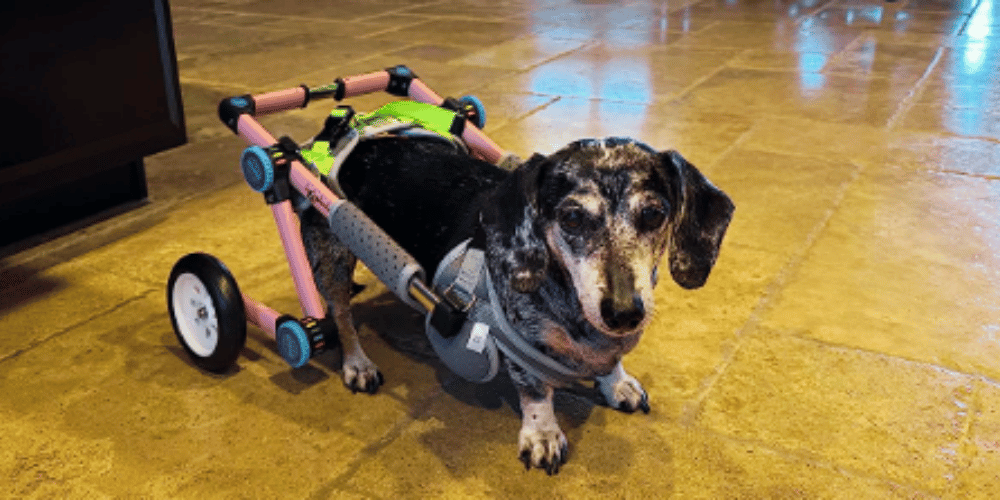
The Importance of the Right Fit
A wheelchair that doesn't fit properly can do more harm than good. It's essential to choose a mobility device that matches your dog's weight and size. Small dogs and large dogs have different needs, and a well-fitting wheelchair should comfortably support your dog's abdomen without causing any discomfort or restricting their movement.
Adjusting to a New Normal: Helping Your Dog Adjust
Introducing your dog to a wheelchair is a process that requires patience. Most dogs will need time to get used to the sensation of being supported by a mobility device. It's important to start with short sessions and gradually increase the duration as your dog becomes more comfortable. Positive reinforcement and treats can help your dog associate the wheelchair with a positive experience.
Customizing Wheelchair Features for Your Dog
When it comes to enhancing your furry friend's mobility, not all wheelchairs are created equal. Customizing features to suit your dog's condition is crucial for their overall well-being. For instance, a small dog may require a lightweight frame that doesn't impede movement, while a large dog might need a sturdier structure to support its weight.
Pay attention to the wheels' size and tread, which should be appropriate for your pet's typical terrain, whether that's smooth indoor floors or rugged outdoor paths. Additionally, consider wheelchairs with adjustable harnesses and supports to accommodate your dog's growth or changes in their condition.
Moreover, for dogs with weakness in their hindquarters, a wheelchair that supports the dog's rear legs can be a game-changer. Some dog carts are designed with a sling that cradles the dog's abdomen, ensuring they're comfortable and secure. It's also worth looking into models that offer attachments for other dogs who may need additional support, such as those with hip dysplasia or arthritis. By choosing a wheelchair with the right custom features, you can significantly improve your senior dog's quality of life and keep them staying mobile and happy.
Diet and Nutrition for Optimal Dog Mobility Maintaining your pet dog's mobility starts with a balanced diet and proper nutrition. Just like in humans, a dog's weight plays a crucial role in their overall well-being and joint health. Overweight dogs may experience increased stress on their joints, which can exacerbate mobility issues, particularly in the dog's rear legs. Ensuring your dog has a diet tailored to their specific needs, age, and activity level can prevent unnecessary strain on their body and promote a healthier lifestyle.
In addition to regular meals, supplements can also support your dog's health, especially for those with mobility concerns. Ingredients like glucosamine and chondroitin are known to aid in joint health, potentially improving the dog's condition and comfort. Always consult with your vet before introducing any new supplements to your dog's diet, as they can provide personalized advice based on your dog's health history and current condition. A well-managed diet can be a proactive step in keeping your dog ready for an active life, with or without a mobility aid.
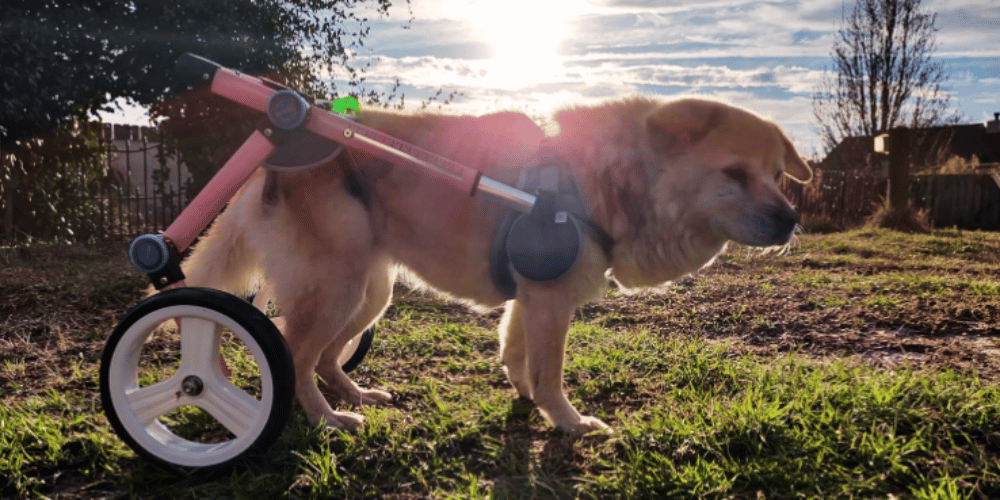
Training and Adaptation Strategies for Dogs with Wheelchairs When a dog begins using a wheelchair, training and adaptation are key to ensuring they get the most out of their new mobility aid. It's important to start with short, positive sessions to help your dog associate the wheelchair with a positive experience. Use treats and praise to encourage your dog as they learn to move with the aid of the wheelchair. This can help strengthen the dog's hindquarters and improve their confidence in using the device.
Moreover, gradual introduction to different terrains and environments can help your pet dog become more adept at maneuvering their wheelchair. Start on flat, even surfaces and slowly progress to more challenging areas as your dog's skills improve. This will not only help in strengthening the dog's abdomen and remaining limbs but also ensure they can enjoy a variety of activities. Remember, patience and consistent training are essential as your dog adapts to their new way of moving around, enhancing their quality of life and ensuring their happiness.
Caring for Your Dog's Mobility: Diet and Weight Management
Maintaining your pet dog's weight is crucial for their overall well-being, especially when they are facing mobility challenges. Excess weight can put additional strain on your dog's rear legs, hindquarters, and abdomen, exacerbating any existing conditions. A balanced diet, tailored to your dog's health needs, can prevent unnecessary stress on their body and potentially delay the need for a wheelchair. Consult with a veterinarian to create a nutrition plan that supports your dog's mobility and keeps them at a healthy weight.
Weight management is not just about diet; it's also about regular, appropriate exercise. Even if your dog's mobility is compromised, there are ways to keep them active without overburdening their condition. Water therapy, for instance, can be gentle on your dog's joints while providing a good workout. Always monitor your dog's weight and adjust their diet and exercise regimen accordingly to ensure they maintain a healthy lifestyle that supports their mobility needs.
Training Techniques for Dogs with Wheelchairs
When it comes to enhancing your dog's mobility, especially if they're new to a wheelchair, training is key. It's not just about physical support; it's about building confidence and comfort with their new equipment. Start with short, positive sessions, encouraging your pet dog to move forward with treats and cheerful affirmations. It's crucial to create a stress-free environment, so your furry friend associates the wheelchair with positive experiences. Remember, patience is your best friend during this process, as every dog will adapt at their own pace.
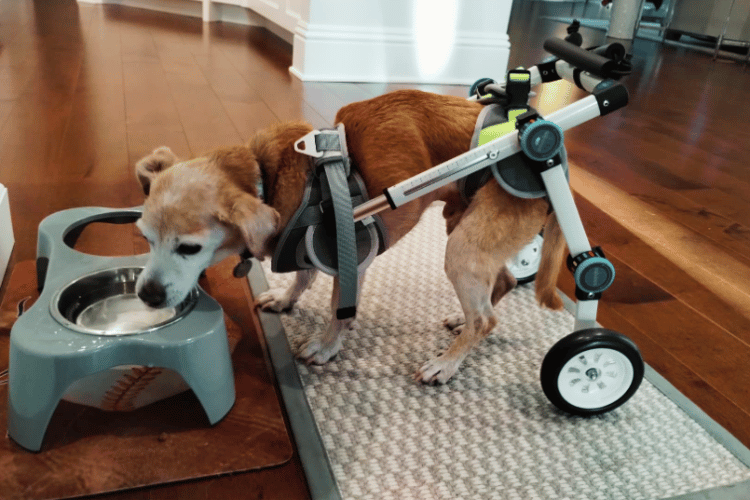
Moreover, training should also focus on strengthening the dog's remaining abilities. For instance, if your dog's rear legs are supported by the wheelchair, work on enhancing the strength and flexibility of their front legs and core. This can be done through specific exercises recommended by a canine rehabilitation specialist. By doing so, you're not only aiding in their current mobility but also contributing to their overall well-being, ensuring they can enjoy their daily activities with ease and joy.
Wheelchair Training: Building Confidence and Independence
When introducing a wheelchair to your dog, it's crucial to approach the process with patience and positivity. Start by allowing your dog to get accustomed to the presence of the wheelchair. Place it near their bed or feeding area so they can investigate it on their terms. This familiarization phase is essential for your dog's confidence and can significantly impact their overall well-being. Encourage them with treats and praise to create positive associations with the new equipment.
Once your dog seems comfortable around the wheelchair, the next step is to gently guide them into it. Support your dog's abdomen and rear legs as needed, ensuring they feel secure. Begin with short sessions, gradually increasing the duration as your dog's confidence grows. Remember, every dog's condition is different, so tailor the training to your pet's specific needs and comfort level. Celebrate small victories with your furry friend to boost their morale and independence.
The Significance of Weight Distribution in Dog Wheelchairs When it comes to enhancing your dog's mobility, especially if your dog's rear legs are compromised, the weight distribution of the wheelchair is crucial. A well-designed wheelchair will support your dog's hindquarters and abdomen without causing strain or discomfort. This balance helps prevent further injury and promotes a more natural gait, allowing your dog to move with ease. It's essential to choose a wheelchair that considers your dog's specific weight and build to ensure optimal weight distribution.
Moreover, the correct weight distribution in a wheelchair can significantly impact your dog's overall well-being. If the wheelchair is too heavy or improperly balanced, it could lead to additional health issues, such as pressure sores or muscle strain. To avoid these complications, it's advisable to seek a wheelchair that has adjustable components. This way, as your dog's condition changes—whether they gain or lose weight or their strength varies—you can adjust the wheelchair accordingly to maintain the perfect balance.
Enhancing Your Dog's Independence Through Mobility Support A dog wheelchair is more than just a device; it's a gateway to independence for dogs struggling with mobility. When a dog's rear legs are no longer fully functional, a wheelchair can provide the necessary support to keep them active and engaged. With the right wheelchair, your dog can continue to enjoy walks, playtime, and exploration, which are vital for their mental and physical health. The joy of movement can have a profound effect on a dog's spirit, and a wheelchair can be the tool that restores that joy.
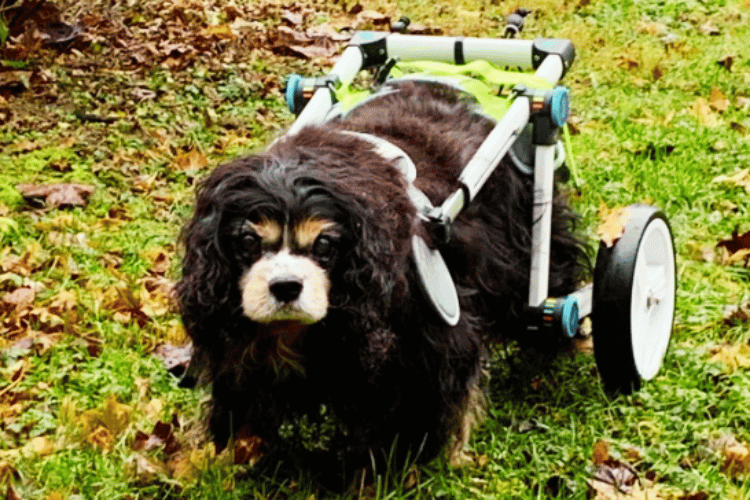
Furthermore, supporting your dog's mobility with a wheelchair can help maintain muscle tone in the dog's abdomen and remaining active limbs. This is important because it can slow down the progression of muscle atrophy due to inactivity. By encouraging your dog to move, you're not only helping their current state but also investing in their future health. It's a compassionate step that can make a significant difference in your dog's quality of life, ensuring they remain a happy and integral part of the family for as long as possible.
The Role of Regular Check-Ups in Maintaining Mobility
Regular veterinary check-ups play a pivotal role in monitoring your dog's health, especially when they're using a mobility aid. These visits allow your vet to assess your dog's weight, condition of their hindquarters, and overall mobility. Keeping your dog's weight in check is vital, as excess weight can put additional strain on their remaining functional limbs and potentially the wheelchair itself. Your vet can provide guidance on diet and exercise tailored to your dog's needs.
During these check-ups, your vet can also examine the fit and condition of the wheelchair, ensuring it continues to serve your dog's mobility without causing any discomfort or harm. They can check for any signs of rubbing or irritation on your dog's abdomen or hindquarters and make recommendations for adjustments or alternative solutions. Regular veterinary oversight ensures that your dog's mobility aid remains a beneficial tool for their health and happiness, rather than a source of additional problems.
Wheelchair Compatibility with Outdoor Adventures
Wheelchairs can open a new world of adventure for your pet dogs, allowing them to explore the outdoors with renewed vigor. When selecting a wheelchair, consider the types of activities you and your dog enjoy. A dog's condition, such as weakness in the dog's hindquarters, shouldn't stop them from basking in the sun or playing in the park. Look for wheelchairs that are durable and can handle various terrains, from grassy fields to sandy beaches. This ensures that your dog can participate in family outings without any hindrance.
In addition to the wheelchair's durability, consider how it supports your dog's abdomen and spine during outdoor excursions. A well-supported dog is a happy dog, and the right wheelchair can prevent additional strain on their body. When planning an outdoor adventure, always monitor your dog's weight and health, adjusting the wheelchair as needed to accommodate any changes. This attention to detail will keep your dog comfortable and ready to explore the great outdoors alongside you, maintaining their quality of life and zest for exploration.
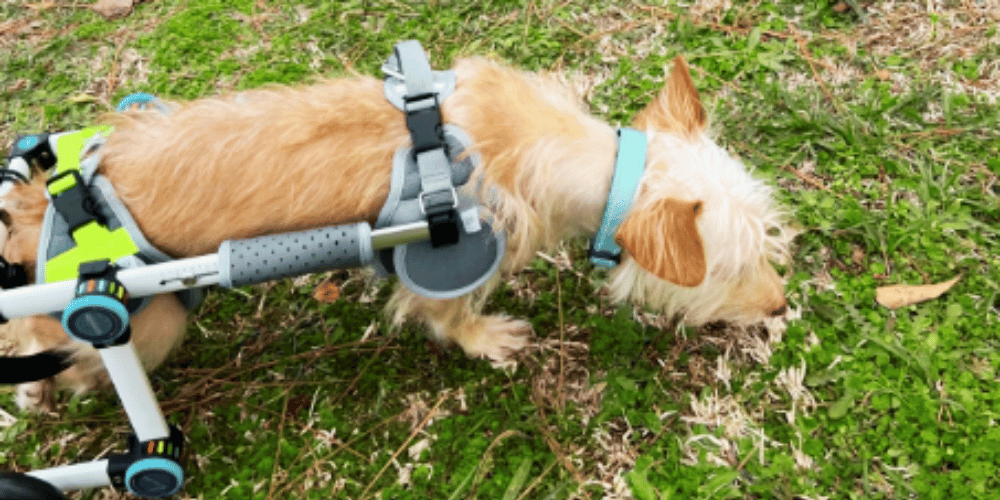
The Psychological Benefits of Mobility Aids for Dogs
Introducing a wheelchair to your pet dog can have a transformative effect on their psyche. Dogs are naturally active creatures, and losing the ability to move freely can lead to frustration and depression. Mobility aids like wheelchairs can restore a sense of independence, allowing them to engage with their environment and socialize with other dogs and people. This can significantly improve your dog's mood and overall spirit, which is an essential part of their health and recovery.
Moreover, the use of mobility aids often leads to a positive feedback loop in a dog's condition. As they become more active and engaged, their muscle tone can improve, potentially aiding in their rehabilitation. The joy of being able to move again can also encourage your dog to be more active, which contributes to their physical health. Observing your dog's renewed zest for life can be incredibly rewarding for you as an owner, knowing that you've contributed to their happiness and well-being.
Integrating Wheelchairs into Social and Play Activities
Introducing a wheelchair to your dog doesn't mean they have to miss out on socializing with other pets or engaging in play. In fact, more dogs are finding that their mobility aids are a passport to new adventures. When your dog is ready for social interactions, start by allowing them to get comfortable with their new equipment around familiar dogs. This can help reduce any initial anxiety and encourage them to interact as they normally would. It's also a great opportunity for other dogs to get used to the wheelchair, ensuring that playtime remains safe and enjoyable for everyone involved.
Playtime is equally important for a dog's mental and physical health, and a well-fitted wheelchair can make all the difference. Look for toys and games that your dog can enjoy while using their wheelchair, such as fetch with a lightweight ball or tug-of-war with a soft rope. Always supervise these activities to ensure your dog's safety, especially as they navigate their new mobility aid. With a little creativity and patience, your dog's wheelchair can become a tool that enhances their play rather than a limitation, keeping their spirits high and their hind leg muscles engaged.
The Role of Exercise and Rehabilitation
Even with a wheelchair, it's important for dogs to continue exercising to build muscle and maintain overall health. Dog parents can assist dogs in staying active by encouraging gentle exercises that are safe for their condition. This can help prevent further muscle atrophy and contribute to their overall well-being.
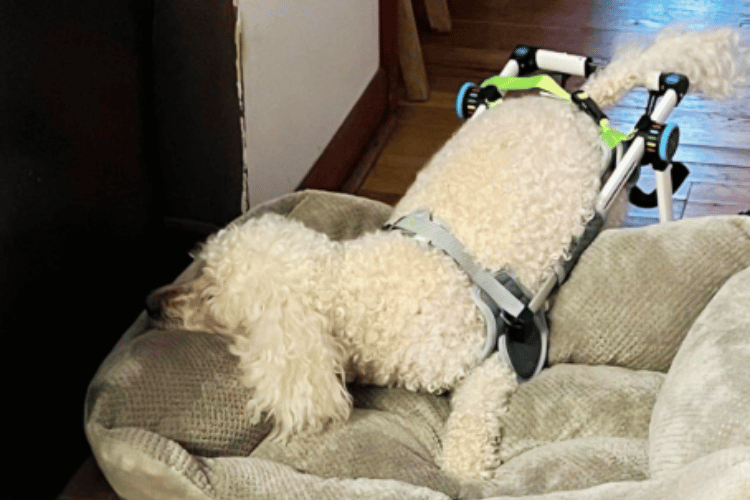
Mobility Aids for Senior Dogs
Senior dogs often face mobility challenges due to old age and health issues. A wheelchair can provide these older dogs with the support they need to continue enjoying their golden years. By alleviating the strain on their joints and allowing them to move more freely, wheelchairs can significantly improve the quality of life for senior dogs.
The Emotional Impact of Mobility Devices
It's not just the physical benefits that make wheelchairs valuable for dogs with mobility issues. The emotional uplift that comes from regaining independence can be transformative. Dogs that were once withdrawn due to limited mobility often become more engaged with their family pets and other animals once they have the support of a mobility aid.
Preparing Your Home for a Wheelchair-Bound Dog
Making your home wheelchair-friendly is an important step in helping your dog adjust. This might involve rearranging furniture to create wider pathways, securing rugs to prevent slipping, and setting up ramps for easier access to different areas. A supportive environment will make the transition smoother for your dog.
The Cost Factor: Investing in Your Dog's Mobility
While dog wheelchairs can be an investment, many dog parents find that the improvement in their pet's quality of life is well worth the cost. There are options available for different budgets, and some organizations offer financial assistance or donation-based wheelchairs for those in need.
Choosing the Right Wheelchair Vendor
When selecting a wheelchair for your dog, it's important to choose a reputable vendor. Look for companies that specialize in mobility solutions for pets and offer customization options to ensure a perfect fit. Customer reviews and testimonials can provide insight into the experiences of other dog owners with similar needs.
The Journey Ahead: Life with a Wheelchair
Adapting to life with a wheelchair is a journey for both the dog and the dog parents. It's a process that involves learning, adjusting, and celebrating the small victories as your dog regains their mobility. With the right support and care, dogs can thrive despite their mobility challenges.

Summary
Determining whether your dog needs a wheelchair involves observing signs of mobility issues, conducting simple assessments like the towel test, and consulting with your vet. Choosing the right type of wheelchair, ensuring a proper fit, and helping your dog adjust to their new mobility aid are crucial steps. With the right approach, a wheelchair can significantly enhance your dog's quality of life, providing them with the freedom to move and engage with the world around them.
FAQ Section
Q: How can I tell if my dog is ready for a wheelchair? A: Look for signs of difficulty walking, reluctance to move, or a decrease in activity levels. If your dog's hind legs are weak or they're dragging their back legs, it might be time to consider a wheelchair. Always consult with your vet to understand the underlying cause of your dog's mobility issues.
Q: Will my dog still need to exercise if they have a wheelchair? A: Yes, exercise remains important for dogs with wheelchairs. It helps to build muscle, prevent further atrophy, and maintain overall health. Work with your vet to create a safe exercise regimen that's appropriate for your dog's condition.
Q: How much does a dog wheelchair cost, and are there affordable options? A: The cost of dog wheelchairs varies depending on the size and type of wheelchair needed. There are affordable options available, and some organizations offer financial assistance or donation-based wheelchairs. It's important to invest in a quality wheelchair that fits your dog properly to ensure their comfort and safety.
Thank you for visiting LegitLists we hope this helps you make a legitimate choice!






